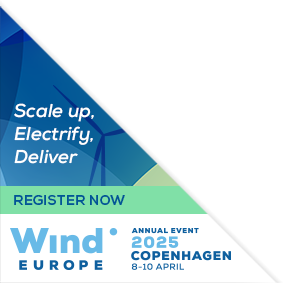Posters
Siblings:
ProceedingsProgrammeSpeakersPostersContent PartnersPowering the FutureMarkets TheatreResearch & Innovation in actionStudent programmePresenters dashboardCome meet the poster presenters to ask them questions and discuss their work
We would like to invite you to come and see the posters at our upcoming conference. The posters will showcase a diverse range of research topics, and will give delegates an opportunity to engage with the authors and learn more about their work. Whether you are a seasoned researcher or simply curious about the latest developments in your field, we believe that the posters will offer something of interest to everyone. So please join us at the conference and take advantage of this opportunity to learn and engage with your peers in the academic community. We look forward to seeing you there!

PO113: Development of a floating Vertical Axis Wind Turbine for the Mediterranean Sea
Alberto Ghigo, PhD Student, Politecnico di Torino
Abstract
Vertical Axis Wind Turbines (VAWTs) find their most widespread applications in small-scale contexts, such as providing electricity in isolated areas or urban settings. This prevalence is partly due to the competition posed by Horizontal Axis Wind Turbines (HAWTs), which are more established and mature technologies in the market. A promising field of application for VAWTs is in floating offshore applications, offering several advantages. By placing the rotor-nacelle assembly (RNA) at the base of the VAWT, the system gains increased static stability thanks to a lower moment of inertia, and reduced operational and maintenance (O&M) costs. Additionally, VAWTs generate reduced aerodynamic wakes due to a different wake dynamic, allowing for closer turbine placement. However, to be competitive with floating HAWTs, scaling up VAWTs size is an urgent necessity to facilitate large-scale industrialization. Developing tools capable of assessing VAWT performance in challenging offshore environments is crucial to achieve this goal. This paper introduces a time domain model of a floating vertical axis wind turbine developed within the Matlab-Simscape environment. The model comprises a floating platform, a wind turbine, and a mooring system. The aerodynamics is simulated using the Double Multiple Stream Tube method, which relies on the blade element momentum (BEM) theory. On the other hand, Hydrodynamics is modelled using WEC-Sim, a Simscape library developed by NREL and SANDIA. The paper presents a case study involving a semi-sub foundation, the OC4-DeepCwind, supporting a Darrieus H-rotor VAWT. The results are compared with those from QBlade Ocean, an open-source tool developed by TU Berlin, demonstrating a good agreement between the two codes and significantly reducing simulation time.










